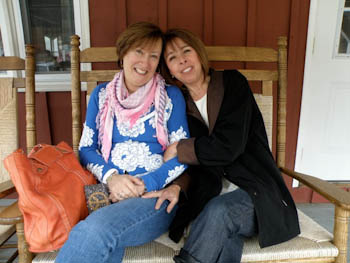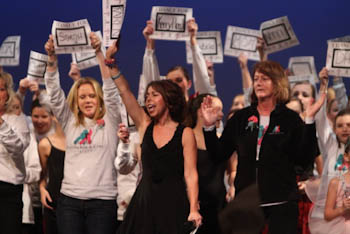If you asked a young Susan Mendoza Friedman where she saw her life going, she would not have said fundraising for cancer research and patient care. But, when the dance studio owner and early childhood expert’s best friend of 40 years, Karen Schek, was diagnosed with ovarian cancer in November 2005, that’s exactly what happened.

“I put up signs outside my studio to see if anyone would be interested in a special holiday performance to raise money for ovarian and breast cancer research and care,” says Friedman, who founded Dance Designs in 1990 and continues to teach at the studio. “I ended up finding a lot of others who had been touched by these cancers.”
Friedman, with the support of her studio and Schek, founded Dancing for a Cure in 2005 to raise money for the Friends of Dana Farber, an all-volunteer organization that provides patient services, educational activities, and fundraising for Dana-Farber Cancer Institute. The first performance took place in front of 100 people at Dance Designs and raised $7,000. Today, dancers put on three performances to crowds of nearly 400 people each, bringing in nearly $50,000 a year. Dancing for a Cure then allocates funds equally between cutting-edge research and patient care in both breast and ovarian cancer at the Susan F. Smith Center for Women’s Cancers at Dana-Farber.
Dancing has been a part of Friedman’s life from a young age, as has cancer. She lost her father to cancer when she was just 15 months old, and dance has helped her through many hardships, something she’s witnessed in her students as well.
“There are many girls in the studio who have been touched by cancer,” says Friedman, whose shows on Dec. 13-14, 2013 were dedicated to caregivers, a role Friedman knows well from Schek’s experience. “There are lots of tears at the show, but a lot of hope, too.”

Schek enjoyed seven years of dance performances organized by her best friend, who even streamed the 2012 event live for Schek, who was too sick to make the trip from New York to Cape Cod. She died in March 2013.
“This isn’t just about dancing,” says Friedman, who can attest to the healing qualities of dance she’s seen in some of her students. “We’re also educating young girls from age 10 up about these diseases and their symptoms, and how they can help support patients and research to help find a cure.”
